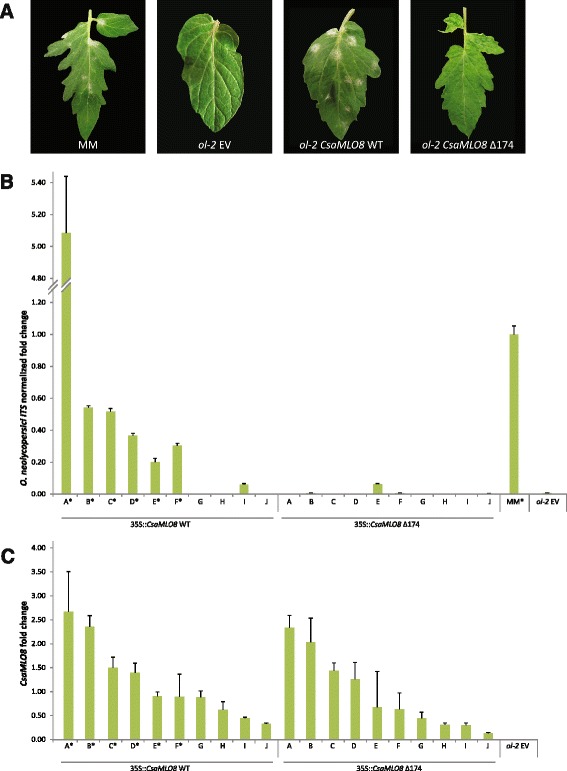Fig. 2.

Complementation of ol-2 tomato with CsaMLO8 WT restores PM susceptibility, whereas complementation with CsaMLO8∆174 does not. The PM resistant ol-2 tomato mutant with a deletion in SlMLO1 [21] was transformed with either a 35S::CsaMLO8 WT construct, a 35S::CsaMLO8∆174 construct, or an empty vector (EV) control. Cuttings from these transformants were inoculated with a Oidium neolycopersici spore suspension. As additional control we used the wild-type, susceptible cv. Moneymaker (MM). a The phenotype of susceptible control MM, resistant EV transformed ol-2, and transgenic individuals overexpressing either CsaMLO8 WT or CsaMLO8∆174 in ol-2 background. Photographs were taken 16 days post inoculation. b Relative quantification by qPCR of the ratio between Oidium neolycopersici and plant gDNA in susceptible MM, resistant EV transformed ol-2, and transgenic individuals overexpressing either CsaMLO8 WT or CsaMLO8∆174 in ol-2 background. Fold changes were normalised relative to the susceptible control MM. Bars represent the average fold change over 3 technical replicates. Error bars indicate standard deviation. Asterisks indicate plants scored as susceptible to powdery mildew based on macroscopic evaluation. c Relative quantification by qRT-PCR of the ratio between CsaMLO8 expression and expression of tomato housekeeping gene SlEF-α in EV transformed ol-2 and transgenic individuals overexpressing either CsaMLO8 WT or CsaMLO8∆174 in ol-2 background. Bars represent the average fold change over 3 technical replicates. Error bars indicate standard deviation. Asterisks indicate plants scored as susceptible to powdery mildew based on macroscopic evaluation
